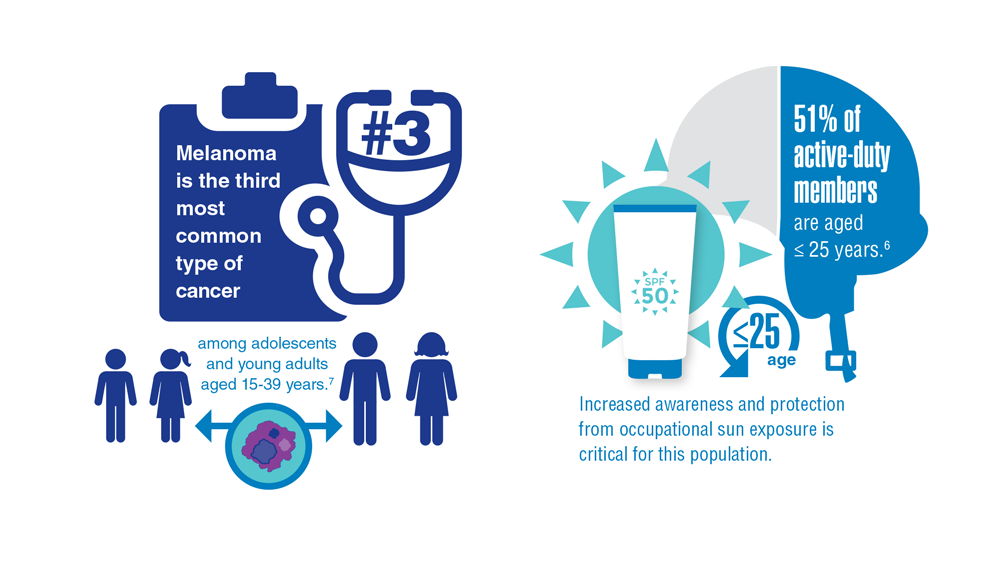Necessary Updates to Skin Cancer Risk Stratification
Willis ‘Hugh’ Lyford, MD, FAAD
Staff Dermatologist, Naval Medical Center
Assistant Professor of Dermatology,
Uniformed Services University of the Health Sciences
San Diego, CA
Slideshow below.
It is becoming increasingly evident that members of the US military and veterans have higher risk factors for melanoma and nonmelanoma skin cancers due to occupational sun exposure. They may not have access to protection (ie, topical sunscreens, wide-brimmed hats, or ultraviolet-repellent clothing) and may lack awareness of the risks associated with certain military occupations that require prolonged sun exposure. Soldiers have reported low sunscreen usage, and few veterans recall the US military providing education on skin cancer risks during their service.1
When detected and treated early, common forms of nonmelanoma skin cancer can have a survival rate higher than 95%.2 In some basal and squamous cell carcinoma cases, the cancer can be completely removed with the initial biopsy procedure alone. Skin cancer can affect anyone, regardless of skin color or ethnic background. The skin cancer diagnosis rate among non-Hispanic White individuals is roughly 30 times higher than that of people who are Hispanic, Black, Asian, or Pacific Islander.3 Unfortunately, skin cancer in patients with darker skin tones is usually diagnosed in a later stage, when it is more difficult to treat and outcomes are worse.3,4 Thus, people with darker skin tones are less likely than people with lighter skin tones to survive melanoma.3
Two potentially underused resources that could assist with timelier awareness, diagnosis, and treatment of skin cancer for veterans and active-duty personnel include the use of artificial intelligence (AI) technology and social media platforms.
Technology-enhanced detection of skin cancer through AI can assist dermatologists in clinical diagnosis and treatment of skin cancer, and also promote greater access to high-quality skin assessments for patients.3 Dermatologists can help provide access to a repository of diverse sets of data and images that are necessary for building these AI models; therefore, dermatologists can play a valuable role in the development and deployment of AI capabilities that can be applied to skin cancer diagnosis.
The use of social media to spread awareness of skin cancer risks and prevention is critical, especially among active-duty military members who are occupationally exposed to the sun. In 2019, the Health Information National Trends Survey (HINTS) showed that approximately 86% of internet users reported participating in at least 1 social media activity.5 Given the increasing use and influence of social media and its effects on human behavior, this resource can be used as a powerful tool to promote awareness and education and encourage sun protection and regular dermatological screenings, by targeting groups that identify as either active-duty military members or veterans for campaigns to raise awareness.
Veterans and active-duty military members alike need to be informed about skin cancer risks and prevention methods like self-skin evaluations. Using a combination of AI and social media, we can better educate and diagnose our active-duty and veteran patients now and in the future.
The views expressed in this article are those of the author and do not necessarily reflect the official policy or position of the Department of the Navy, Department of Defense, nor the U.S. Government.
1







